The Database of Zeolite Structures
1996 - 2016
20 years of evolution

| It all started in 1996 as an internet version of two books published by the IZA-SC. | |||||||||||||||||||||||||
| W.M. Meier, D.H. Olson and Ch. Baerlocher | M.M.J. Treacy and J.B. Higgins | ||||||||||||||||||||||||
| Atlas of Zeolite Structure Types | Collection of Simulated XRD Powder | ||||||||||||||||||||||||
| Patterns for Zeolites | |||||||||||||||||||||||||
| 4th revised edition | 3rd revised edition | ||||||||||||||||||||||||
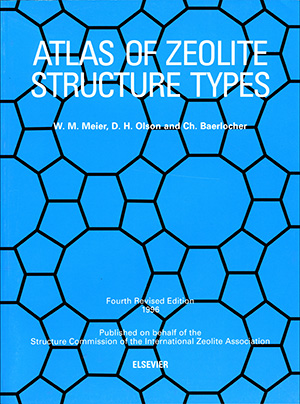 |
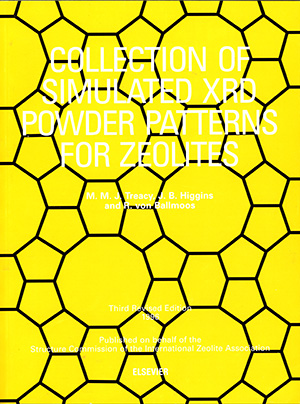 |
||||||||||||||||||||||||
| The online version was set up by Christian Baerlocher on a server at ETH Zurich and was announced at IZC-11 in Seoul, South Korea. It contained 98 static html pages, (one for each framework type code) and a typical page looked something like this: | |||||||||||||||||||||||||
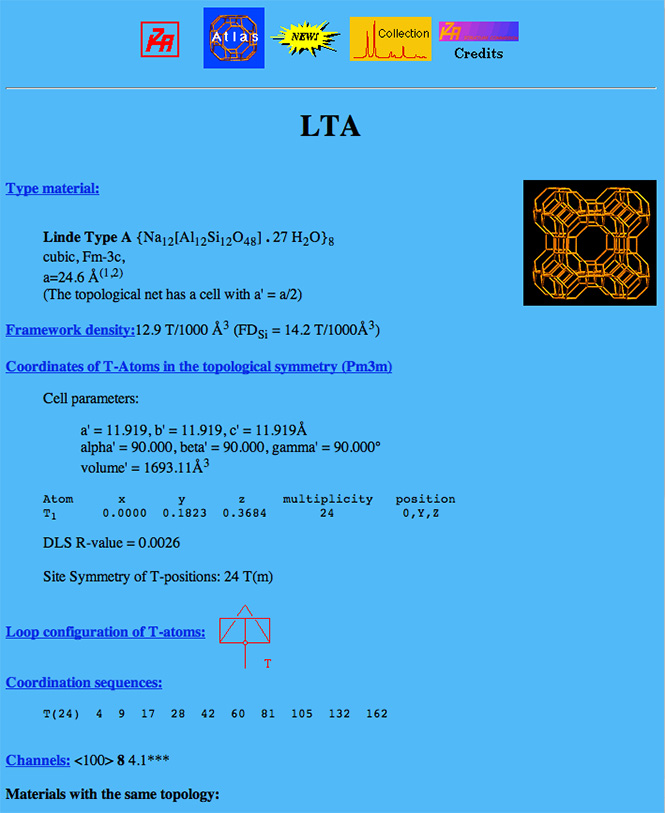 |
|||||||||||||||||||||||||
| In 2001, | |||||||||||||||||||||||||
| new editions of the Atlas and the Collection were published and at the same time, all the data were put into a FileMaker database. The pages could then be generated dynamically and, perhaps more importantly, the data were searchable. The number of framework type codes had risen to 133. | |||||||||||||||||||||||||
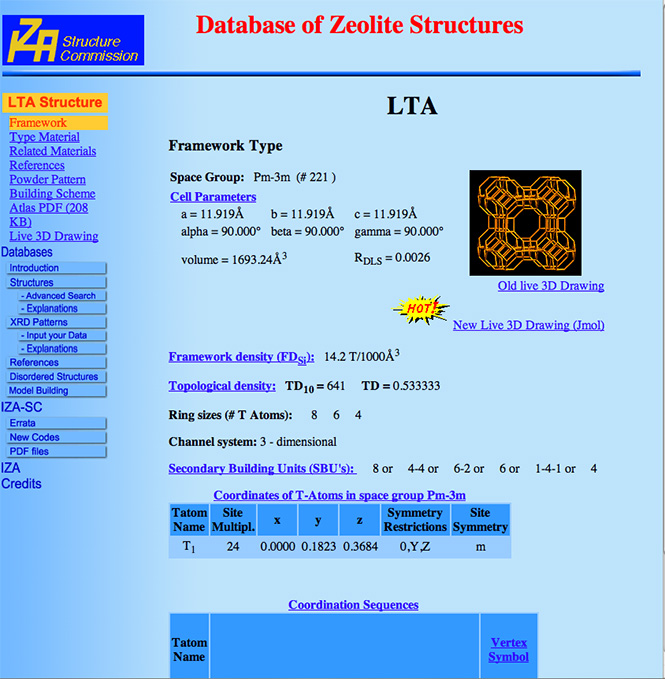 |
|||||||||||||||||||||||||
| In 2004, a user-controlled animated display of each framework type was implemented. | |||||||||||||||||||||||||
| With the next publications in 2007, | |||||||||||||||||||||||||
| the Database of Zeolite Structures was completely redesigned to make navigation more intuitive and easier. New features included an expansion of the animated drawings to display the cages and channel systems using Jmol and composite building units (CBU). The number of framework type codes had risen to 176. | |||||||||||||||||||||||||
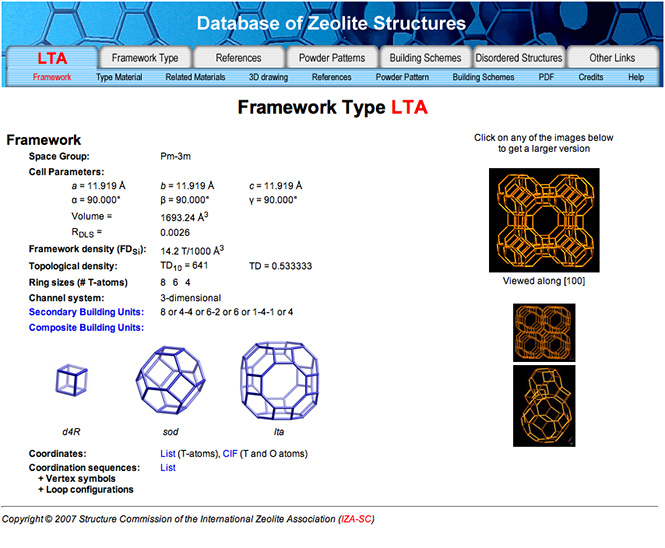 |
|||||||||||||||||||||||||
| In 2008, Natural tilings were added to supplement the CBUs. | |||||||||||||||||||||||||
| In 2010, a mirror server was added at Arizona State University to increase availability. | |||||||||||||||||||||||||
| In 2011, diameters of the largest spheres than can be included in and/or diffuse through a specific framework structure were added to give more information about its channel system. | |||||||||||||||||||||||||
| In 2014, two more servers were added at Stockholm University and KU Leuven. | |||||||||||||||||||||||||
| In 2015, 3D displays of the natural tilings were added | |||||||||||||||||||||||||
| And now in 2016, there are 232 framework type codes and the database has been updated and modernized once again. The changes are mostly behind-the-scenes and relatively opaque to the user. What has happened is that the database has been migrated from FileMaker to MySQL and the query language changed from xsl to php. The new configuration has the advantage of being both truly platform-independent and non-commercial. The four university servers have also been replaced with three commercial virtual servers (vServers) that are located in Europe, Asia and North America to give a better geographical distribution of service. These three servers (paid for by the IZA) will be maintained by Christian Baerlocher and Lynne McCusker (Zurich), Wei Wan and Xiaodong Zou (Stockholm) and Christine Kirschhock and her team (Leuven), respectively. In this way, we hope to ensure the future of the Database of Zeolite Structures on the internet for the next 20 years. | |||||||||||||||||||||||||
| Although the latest update has been performed with the intent of preserving the previous layout for the time being, users will encounter several new features, including a more interactive display of the powder diffraction patterns. | |||||||||||||||||||||||||
| Other new features are planned and will be added as we find the time. Suggestions for improvements are always welcome, and should be addressed to Christian Baerlocher. | |||||||||||||||||||||||||
| And who are the people currently working behind-the scenes on the database? | |||||||||||||||||||||||||
|
|||||||||||||||||||||||||